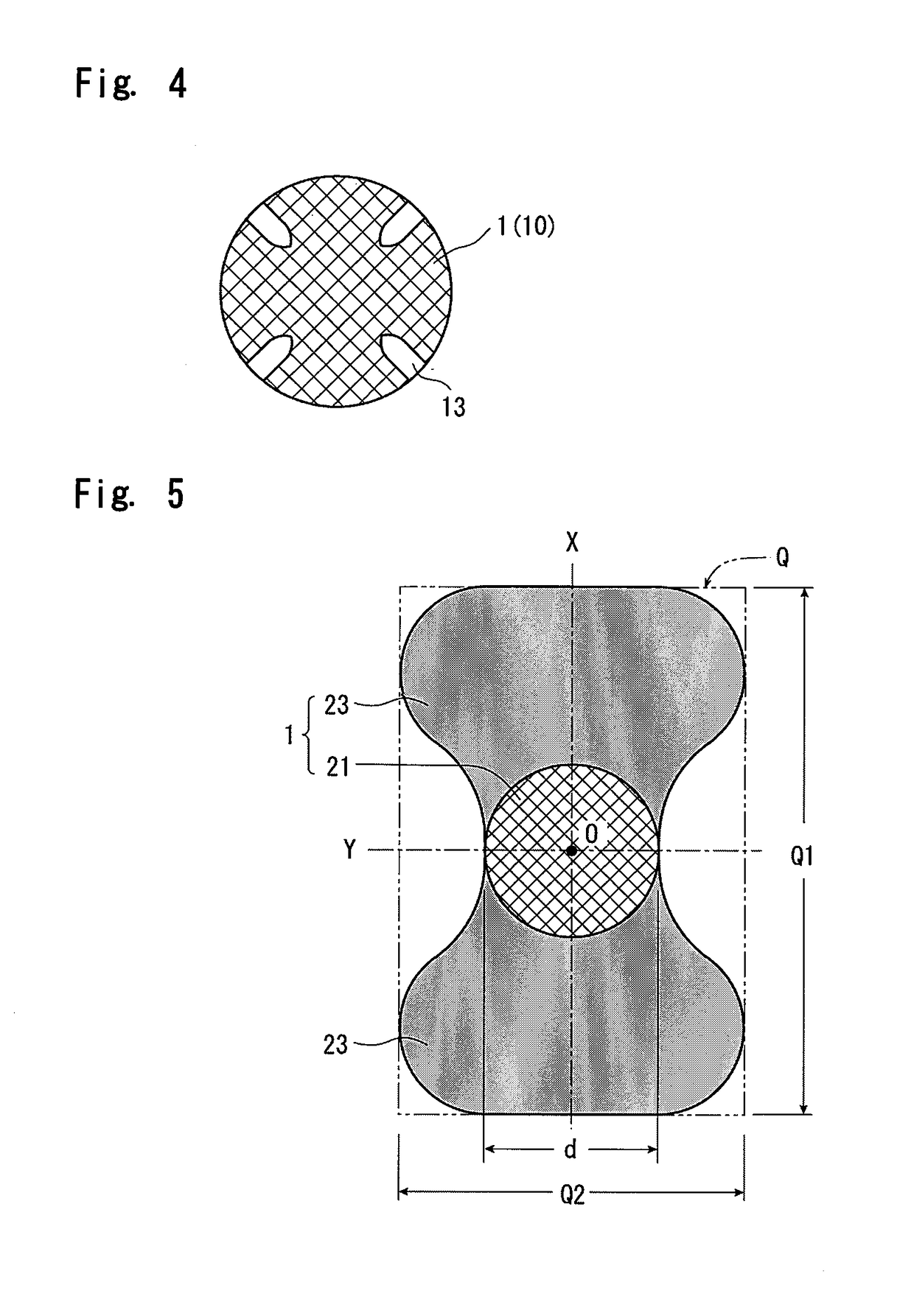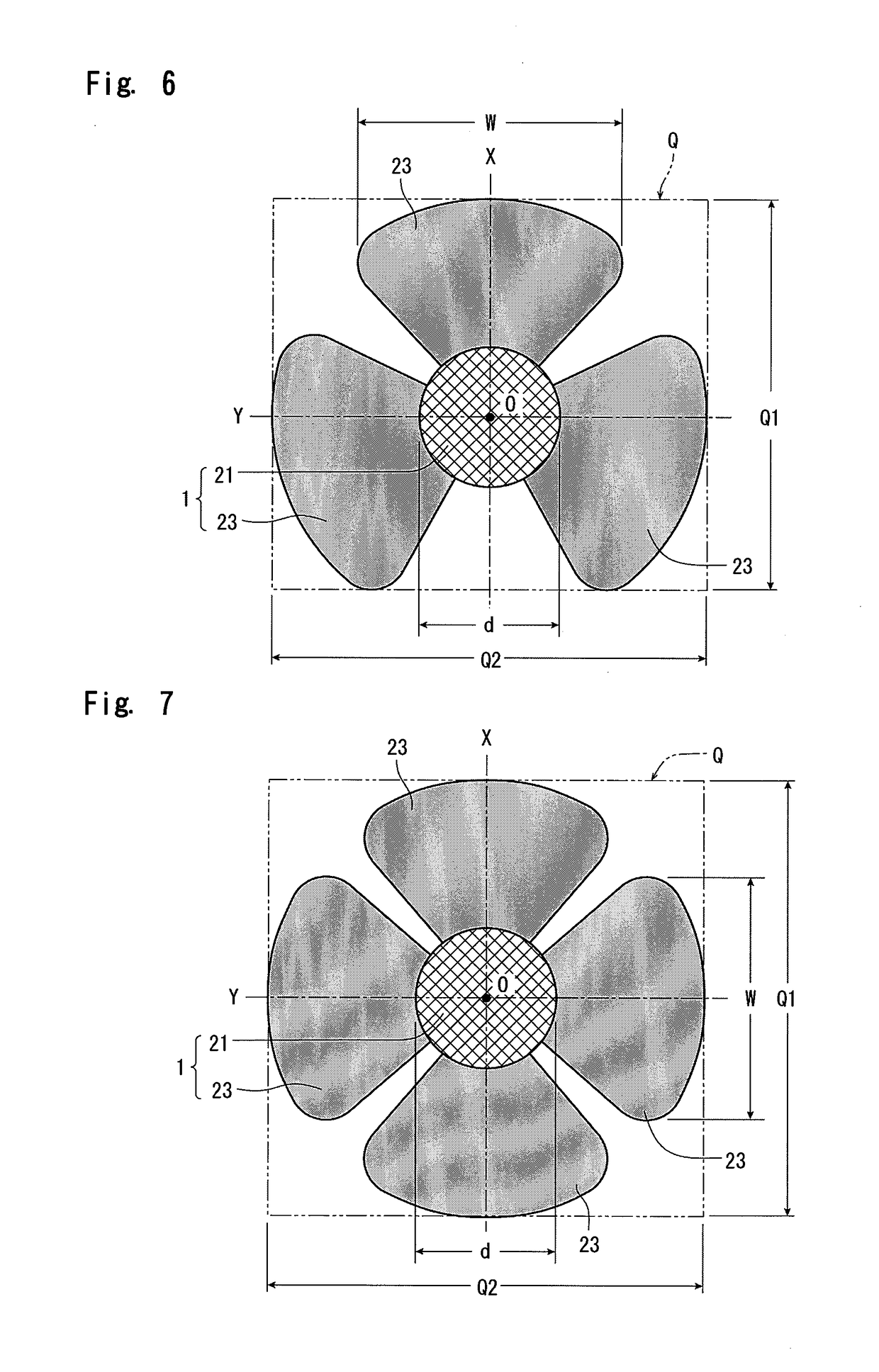Teat opening protection patch for livestock
- Summary
- Abstract
- Description
- Claims
- Application Information
AI Technical Summary
Benefits of technology
Problems solved by technology
Method used
Image
Examples
example 1-1
[0149]The laminate A shown in Table 1 was cut to prepare a teat opening protection patch (type (α)) of a diameter d of 15 mm.
[0150]The teat patch was stuck to the pseudo teat to test its stickiness to the teat. However, no wrinkle was observed either just after it was stuck or after it has been stuck (after 7 days have passed). Further, the number of bacteria on the pseudo teat was counted based on the above-mentioned method. The results were as shown in Table 2.
[0151]Sustenance of patch adhesion was also evaluated by using the real dairy cattle. The results were as shown in Table 3.
[0152]For comparison, the laminate A was cut into a circle 50 mm in diameter and was stuck to the pseudo teat. Wrinkles developed to a slight degree at the curved portions stuck to the teat. The wrinkles, however, disappeared after the elastic sheet 2 of the outermost layer was adhered together.
example 1-2
[0153]The circular laminate prepared in Example 1-1 was cut to form slits at four places as shown in FIG. 4 to prepare a teat patch (type (α)). The slits were each 2 mm in length and 1 mm in width, and were arranged at an equal interval. By using the pseudo teat, the thus obtained teat patch was tested for its stickiness and was counted for the number of bacteria. The results were as shown in Table 2.
example 1-3
[0154]A teat patch was prepared in the same manner as in Example 1-1 but using the laminate B. By using the pseudo teat, the teat patch was tested for its stickiness and was counted for the number of bacteria on the pseudo teat. The results were as shown in Table 2.
PUM
| Property | Measurement | Unit |
|---|---|---|
| Length | aaaaa | aaaaa |
| Length | aaaaa | aaaaa |
| Force | aaaaa | aaaaa |
Abstract
Description
Claims
Application Information
 Login to View More
Login to View More - R&D
- Intellectual Property
- Life Sciences
- Materials
- Tech Scout
- Unparalleled Data Quality
- Higher Quality Content
- 60% Fewer Hallucinations
Browse by: Latest US Patents, China's latest patents, Technical Efficacy Thesaurus, Application Domain, Technology Topic, Popular Technical Reports.
© 2025 PatSnap. All rights reserved.Legal|Privacy policy|Modern Slavery Act Transparency Statement|Sitemap|About US| Contact US: help@patsnap.com



